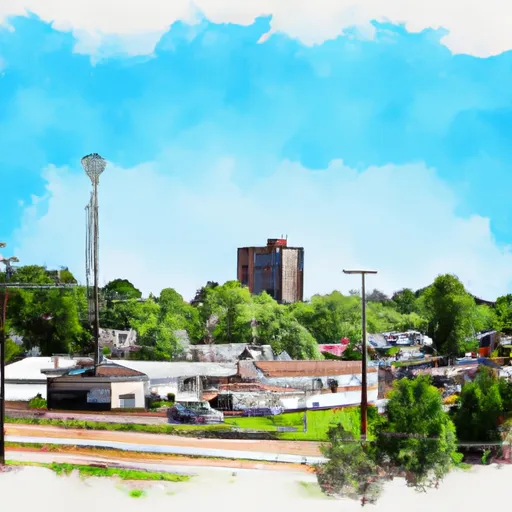-
 Snoflo Premium
Snoflo Premium
Get unlimited access to all our content
With no Ad interruptions! - Start Your Free Trial Login with existing account
Webster
Eden Index
Climate
6.5
•
Recreation
3.5
•
Community
1.7
•
Safeguard
4.2/10

Webster, Minnesota is a small town located in Rice County. The climate in Webster is classified as a humid continental climate, characterized by warm summers and cold winters. Summers are typically mild with temperatures ranging from the 70s to 80s Fahrenheit, while winters are cold with temperatures often dropping below freezing and occasional snowfall.
The hydrology of Webster is heavily influenced by the Cannon River, which flows through the town. The river provides opportunities for various water activities like fishing, kayaking, and canoeing. The area surrounding Webster is also dotted with several lakes, such as Shields Lake and Mazaska Lake, offering additional recreational opportunities for boating and swimming.
Outdoor enthusiasts in Webster can enjoy a range of activities. The nearby Sakatah Singing Hills State Trail offers opportunities for hiking, biking, and snowmobiling. Additionally, there are several parks within driving distance, including Nerstrand-Big Woods State Park and Faribault Dog Park, which provide opportunities for camping, picnicking, and wildlife viewing.
Overall, Webster, Minnesota offers a pleasant climate, abundant hydrological features, and a variety of outdoor recreational opportunities for residents and visitors alike.
What is the Eden Index?
The Snoflo Eden Index serves as a comprehensive rating system for regions, evaluating their desirability through a holistic assessment of climate health, outdoor recreation opportunities, and natural disaster risk, acknowledging the profound impact of these factors on livability and well-being.
Climate Health Indicator (CHI): 6.5
Webster receives approximately
801mm of rain per year,
with humidity levels near 81%
and air temperatures averaging around
8°C.
Webster has a plant hardyness factor of
4, meaning
plants and agriculture in this region thrive during a short period during spring and early summer. Most
plants will die off during the colder winter months.
By considering the ideal temperature range, reliable water supplies, clean air, and stable seasonal rain or snowpacks, the Climate Health Indicator (CHI) underscores the significance of a healthy climate as the foundation for quality living.
A healthy climate is paramount for ensuring a high quality of life and livability in a region, fostering both physical well-being and environmental harmony. This can be characterized by ideal temperatures, reliable access to water supplies, clean air, and consistent seasonal rain or snowpacks.
Weather Forecast
Streamflow Conditions
Minnesota
Area Rivers
Minnesota
Snowpack Depths
Minnesota
Reservoir Storage Capacity
Minnesota
Groundwater Levels
Recreational Opportunity Index (ROI): 3.5
The Recreational Opportunity Index (ROI) recognizes the value of outdoor recreational options, such as parks, hiking trails, camping sites, and fishing spots, while acknowledging that climate plays a pivotal role in ensuring the comfort and consistency of these experiences.
Access to outdoor recreational opportunities, encompassing activities such as parks, hiking, camping, and fishing, is crucial for overall well-being, and the climate plays a pivotal role in enabling and enhancing these experiences, ensuring that individuals can engage in nature-based activities comfortably and consistently.
Camping Areas
| Campground | Campsites | Reservations | Toilets | Showers | Elevation |
|---|---|---|---|---|---|
| Clubhouse | 55 | 1,434 ft | |||
| Bass Lake | None | 1,445 ft | |||
| Hill Lake City Park | 30 | 1,274 ft | |||
| Riverside City Park - Princeton | None | 956 ft | |||
| American Legion Park - Warba | None | 1,294 ft | |||
| Father Hennepin State Park | 100 | 1,313 ft | |||
| Snake River City Campground | 12 | 1,257 ft | |||
| Button Box ? George Washington State Forest | 12 | 1,400 ft | |||
| Itasca County Fairgrounds | None | 1,302 ft | |||
| Pokegama Rec Area | 21 | 1,291 ft |
Nearby Ski Areas
Catastrophe Safeguard Index (CSI):
The Catastrophe Safeguard Index (CSI) recognizes that natural disaster risk, encompassing floods, fires, hurricanes, and tornadoes, can drastically affect safety and the overall appeal of an area.
The level of natural disaster risk in a region significantly affects safety and the overall livability, with climate change amplifying these risks by potentially increasing the frequency and intensity of events like floods, fires, hurricanes, and tornadoes, thereby posing substantial challenges to community resilience and well-being.
Community Resilience Indicator (CRI): 1.7
The Community Resilience Indicator (CRI) recognizes that education, healthcare, and socioeconomics are crucial to the well-being of a region. The CRI acknowledges the profound impact of these elements on residents' overall quality of life. By evaluating educational resources, healthcare accessibility, and economic inclusivity, the index captures the essential aspects that contribute to a thriving community, fostering resident satisfaction, equity, and social cohesion.

